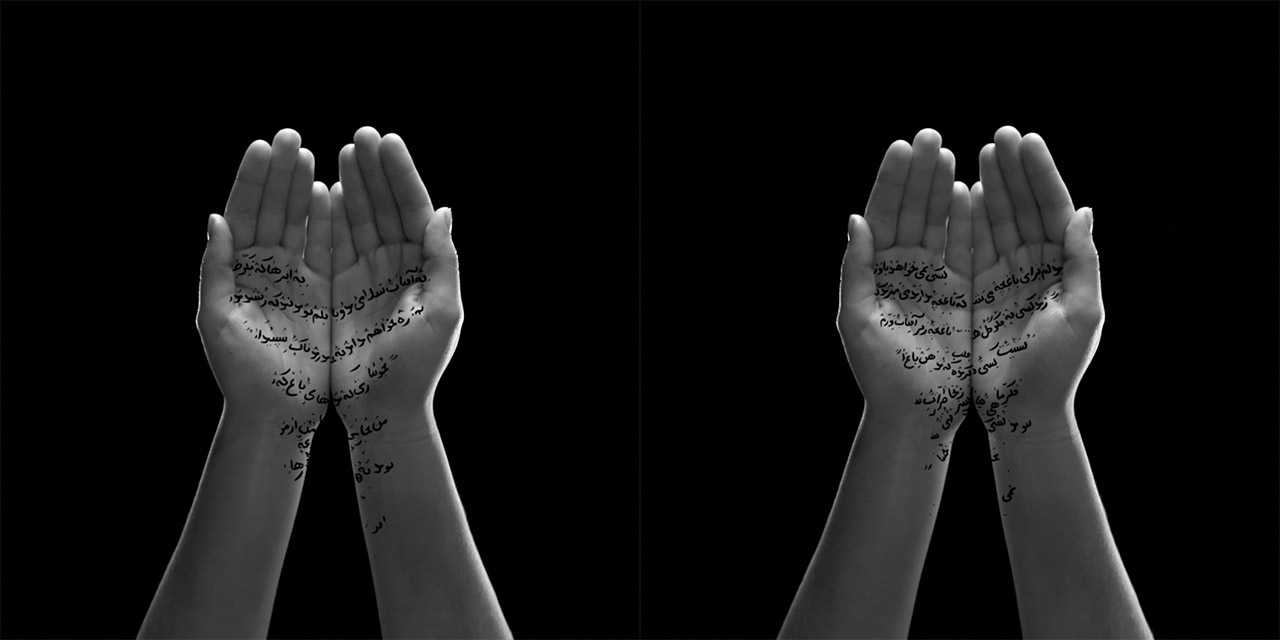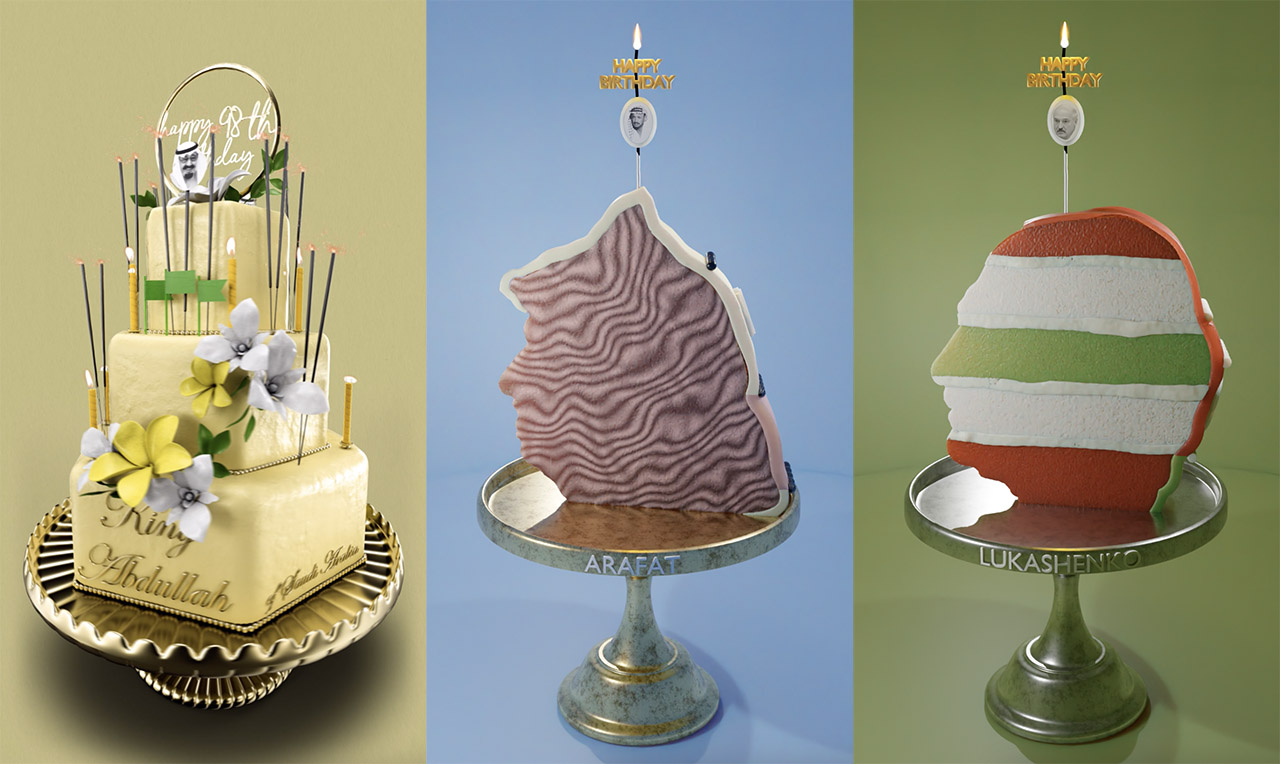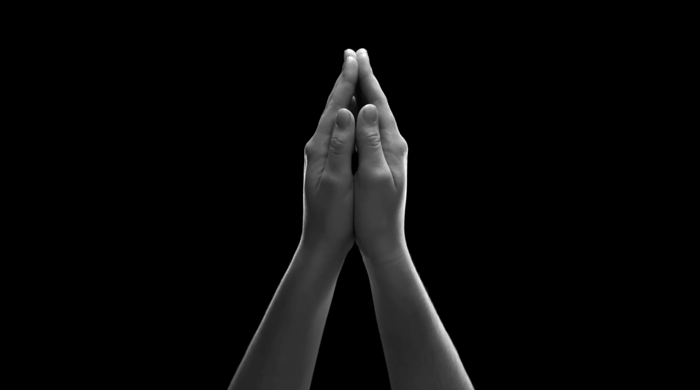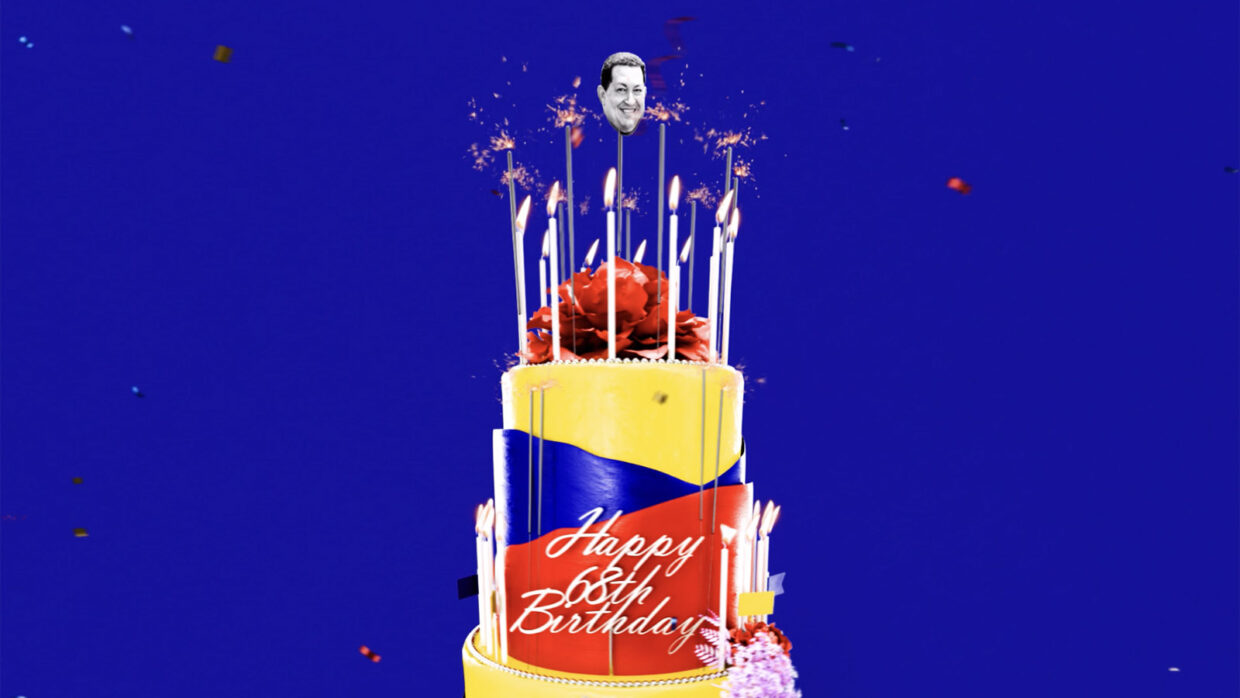“Great art over time is the answer to being in the arts,” reckons Nato Thompson, Co-Founder of Artwrld. He’s discussing the need for art — either analog or digital — to endure beyond this moment, but as well, he’s making plain how his platform, which he launched alongside Josh Goldblum and artist Walid Raad, is centering an art and artist-first approach to Web3. “To me, the dream is to land these things with great execution,” he adds, “to challenge the dominant narrative of the world we are in, to take artists’ dreams seriously, and to bring them to life securely through blockchain technology.”
Artwrld’s stated purpose is to collaborate with artists to produce innovative and challenging projects that probe the possibilities of Web3. Since emerging earlier this year, the platform has unveiled Raad’s first and ongoing NFT collection, Festival of Gratitude, a series of elaborate 3D cakes, each cheekily dedicated to a toxic dictator in a comic mix of art and political commentary. Next up: A Loss For Words by Iranian artist Shirin Neshat, a collection of animated artworks featuring a pair of hands unfolding in a gesture of prayer and bearing fragments of poetry. The mint commences on October 18.

A Loss For Words by Shirin Neshat features the works of 10 Iranian poets, whose words are written in Neshat’s script and slowly drip down the pictured hands and arms in a “simple, poetic, yet subversive gesture.” Images: “Collective Love” and “Passenger” NFTs / Artwrld
These projects explore how artist’s practices may be expanded and amplified in Web3 — much like similar endeavors on TRLab and ARSNL — but further, seek to create real-life impact and shift the plates of the art ecosystem. Every collection launched on the platform will benefit non-profit organizations of the artist’s choosing: Raad’s supports ArteEast, while Neshat’s will contribute to The Brooklyn Rail. The point is to leverage NFTs — their utility and promise — to put control back into the artists’ hands, enabling them to directly receive and distribute royalties, and dictate how their work is created and exchanged.
“We really felt like this is an opportunity to support nonprofits, to put artists’ rights forward,” says Thompson. “And to build a different kind of art world.” Here, he expands on just what that world could look like.
What goes into Artwrld’s collaborations with artists?
I think it’s about following an artist’s dream and being sensitive to it, but also landing boring stuff like production timelines, money, and technical labor. When we started talking about the emergence of NFTs a while ago, it started initially just about the power to restructure what the arts could do economically: how to get artists’ rights in the foreground, but also working with these artists to think about what these affordances are and what this space can do differently. That’s really been a joy and learning curve for myself.
Could you elaborate on that learning curve?
We’re talking about a very new space for everyone and anybody that says they’re an expert is lying — I think it’s a learning curve for everybody. There’s something that’s extremely new particularly on the economic level and the fact that it’s digital. That said, digital art is not new at all, as we all know, but how it translates to Web3 and who the audiences are — that’s new, in a profound way.

Walid Raad’s Festival of Gratitude presents a series of 3D cakes dedicated to the world’s most toxic dictators; collectors can purchase slices from the cakes, each variously laced with an elixir or a poison. Images: Artwrld
To you, what makes a great or successful NFT project?
One that holds true to values and artists’ dreams. You can almost think of it as a strategy — knowing key values allows you to wade through the waters of the arts. If you want to play the stock investor game, there’s plenty of terrible artists to follow. But if you want to play with the real art thing, you’ve got to stick to real art ideas. The space is full of incredibly brilliant minds that are interested in changing society and that are aware of environmental issues, and so many BIPOC and decolonial organizations. We’ve just got to lift those voices up.
What can you share about the collector space, particularly buyer response to Artwrld’s projects?
For our older contemporary art collectors, buying a NFT is not straightforward. I think there’s an illusion that all this is just going to be simple, but it’s not true — the onboarding is going to take time. The good news is because it’s difficult, those that get through it get rewarded. They get incredible art at discounted prices and they’re not going to ever regret it. For the crypto collectors, it’s an important thing to develop community and that’s something we’re working on. And the gap of knowledge between [traditional and crypto] scenes is enormous, so there’s a need to get the communities to get to know each other, to play in the sandbox, to familiarize themselves with contemporary art.

“Digital art is not new at all,” says Artwrld’s Nato Thompson, “but how it translates to Web3 and who the audiences are — that’s new, in a profound way.” Image: “Passenger” NFT by Shirin Neshat / Artwrld
With your background in museums — as Artistic Director at Philadelphia Contemporary and Curator at MASS MoCA — what do you make of how cultural institutions have approached NFTs so far?
There’s a lot of curiosity and there are so many reasons why museums should be interested in NFTs. Think about storage, the ease of movement, new audiences they can develop, or the fact that it’s actually more responsible to artists. The big ones actually have the resources to put some expertise behind it, to think about really important issues like verification and standardization, which needs museum leadership. I know that work is happening and I think it’s a great move.
It’s funny because some of these big NFT artists may say they don’t care about the art world, but they do want to be historicized. They want responsible criticism and academic knowledge, to have some real gravitas put to the work they’re doing. That work can be done by museums, not entirely, but it’s going to happen.
Broadly, how do you see Web3 having an impact across the art ecosystem?
We have a moment to make a different art world and the moment will not be here forever. It requires us to not make the mistakes of Web2. If you’re just one of these neo-libertarian Mark Zuckerberg types, you’re gonna be Mark Zuckerberg again. We need a new world to be multiracial and female, and we need it to really correct those things. If you just chase power, you become centralized. But if you do that with decentralization, that becomes powerful.



